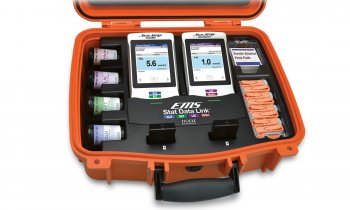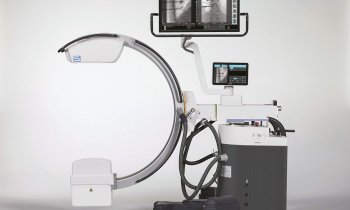A model for future success?
Dr Volker Hüsken describes cost-efficient and patient-oriented hospital management in a major German clinical complex
Volker Hüsken PhD: Following his PhD studies in information technology and economics, in the department of electrical engineering at the RWTH Aachen, Dr Hüsken became a systems engineer at Siemens AG, where he directed the development of the Super Computer Reference Centre.
After several years as IT Director with Klöckner Datentechnik and EDS, he became Senior Consultant for strategic acquisitions with EDS, and was then asked, by the German Armed Forces, to design its intranet.
Later, Dr Hüsken, as Managing Director of international Sema Group, he was responsible for its “Civilian IT” and “Consulting” divisions, which focused on business development in commerce, banking and utilities.
Dr Hüsken became IT Director and CIO of the University Hospital of Cologne in 2003 and, in 2004, Managing Director of MedUniServ GmbH, a service provider owned by the university hospital

If the new requirements for major changes in the billing and documentation of hospital services are to be fulfilled, whilst still reaching priority objectives (cost-efficiency and patient-orientation) the future IT infrastructure must be developed in a far more strategic way. The traditional approach, with its multitude of department-based systems and applications, is no longer viable. The IT department has to support the new financial and organisational freedom accorded to the hospital by the new legal framework efficiently and quickly - particularly organisational changes by sustaining ‘make or buy’ decisions.
Today, a hospital no longer defines itself by its traditional hospital activities but as a healthcare company, i.e. a service provider in the health market. Consequently, medical leadership must define, as clearly as possible, the main medical foci, including all peripheral parameters. That strategy serves as a guideline for the development of the IT infrastructure. Keeping the broadest possible range of services and equipment in stock and striving for utmost flexibility is neither cost-efficient nor patient-oriented.
For IT, the development of a healthcare company means that workflows must be established independently of the organisational framework, so that internal or external resources can provide services. This particularly concerns medical service providers in the areas of laboratory, radiology, nuclear medicine and radiation therapy. Concepts for a hospital electronic patient’s record (EPR) not only have to take into account the entire patient record documentation, but also, and above all they have to cover the complete process behind a medical service, from requests for diagnostics to therapy. If the IT infrastructure causes interruptions or gaps in the implementation of such a concept or workflow, the medical and management information value of stored data becomes distorted. Only a unified and integrated system will allow a meaningful assessment of the real quality and performance of health services.
An IT strategy must first determine which system will be responsible for all transactions involving accounts and which one will deal with the patient’s medical data. Then, specific services, such as communication, archiving and the management information system, must be considered. All these services have to be accessible from all applications, and must allow for external communication.
The final strategic decision concerns the choice of a laboratory system, where the focus is on efficient automation of all laboratory procedures, rather than on patient-oriented services.
The question of how pathology services are to be integrated into a system is still under discussion. The cross-sectional approach to communication, co-operation and information processing and display is the last of the cornerstones of a hospital to be built on internet technology. It is particularly important that all systems follow a common standard, which means not only communication standards for data exchange but also standards with regard to user interfaces, the integration into an operating system and a database environment and user administration. These standards notwithstanding, any integrated system must provide a certain degree of freedom to accommodate individual needs.
In this context, the role of the applications vendor needs to be re-evaluated. The software-vending firm must be included in a hospital’s strategic business planning, so it can understand future requirements and prepare itself accordingly. Obviously, the traditional department-based vendor policy is obsolete. The hospital as a whole enters into a long-term co-operation with a vendor - a fact that both parties should be aware of, because that is the precondition for the speedy implementation of software decisions and requests - a crucial capability in today’s fast-changing market. For example, the KIS vendor has to explore today how, in the future, individual contracts with patients can be reflected by the application. Consequently, price can no longer be the exclusive determining factor for software purchase. Professional trust and confidence and co-operation are the basis of business dealings - and obviously that is something that can be developed with five but not 50 providers.
The transition from a decentralised to a centralised IT department also always has profound implications for the users. The user is interested - understandably so - in having a quick response and all conceivable support from the IT department, whenever it is needed, and he rarely understands the demands of a superordinated process. For the user, centralisation means that he no longer has direct access to ‘his’ IT support person next door, but that this colleague is part of a larger structure and that, most likely, he has no power to set priorities. One approach to avoid frustrations is the implementation of a system of service levels and, for the user, this has to be transparent and make the activities of the IT department predictable. A system of service levels according to ITIL is quite common today. It is crucial that management, and the board, support such a concept - otherwise every attempt to implement standards, be it for applications, hardware or services by the IT department, is doomed to fail. This certainly also holds true for medical technology used in a hospital.
Very often, the IT staff must ‘take the rap’ for many of the daily decisions regarding organisation and workflow necessitated by IT projects, and IT staff must be aware of this fact of life and realise that it is quite useless to fight that. Instead, IT management has to make sure its IT staff has the qualities and qualifications of consultants, because that is what they are: they act as consultants to the hospital because they have the knowledge of almost all activities within the hospital. Today, in most organisations, only very few staff members could fit that bill - not surprising considering the history of IT and IT hospital departments.
The questions of who is responsible for the fulfilment of the various documentation requirements is a major issue today - and it is an issue which increasingly impedes the implementation of IT projects since there are ever more parameters that have to be included to be able to evaluate services and quality. We know from other disciplines that documentation assistants are a very good solution to free medical staff to concentrate on their core task of providing medical services.
In short, cost-efficiency and patient-orientation mean:
• general systematics to implement electronic patient records are available
• limitation to a few strategic applications
• integration beats specialisation
• central standards for hardware/software
• paper-based processes are discontinued
• fast fulfilment of all documentation requirements
• flexible applications with room for individual needs
• intuitive and standardised user interface
• meaningful data analysis that does not allow for individual interpretations
• implementation of service levels
• professional trust in and co-operation with vendors
• location-independent services.
07.08.2006











